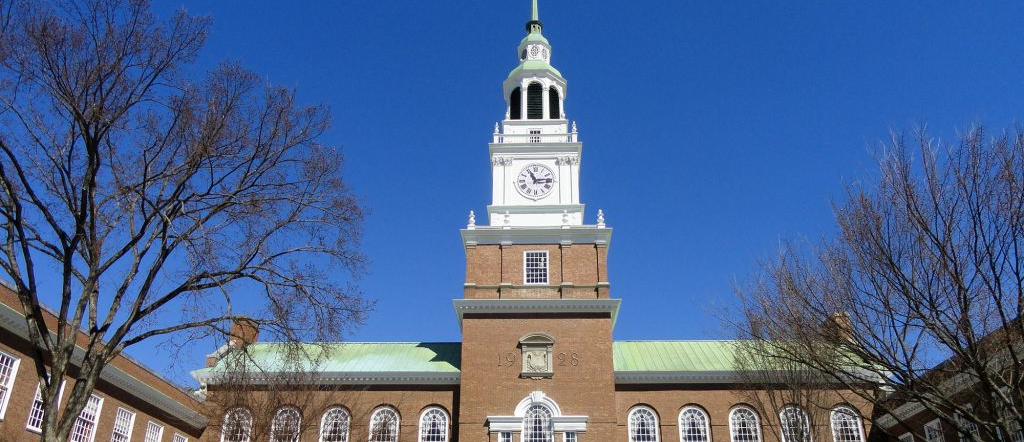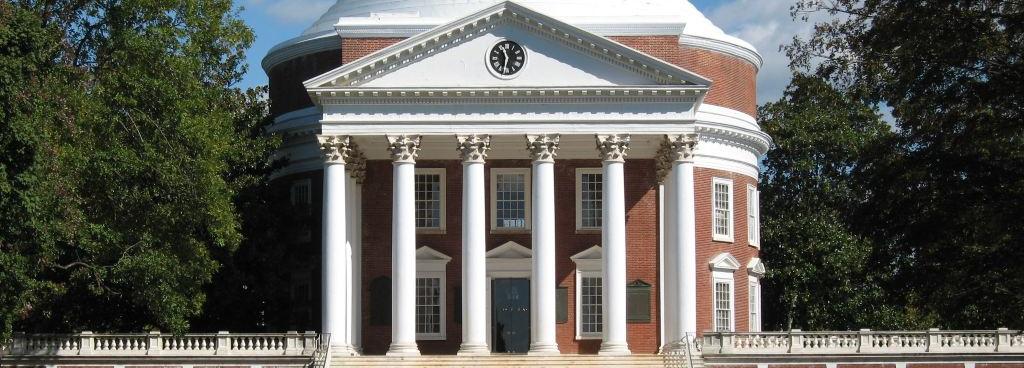Many high school students are familiar with Massachusetts Institute of Technology, or MIT. As the school’s name implies, the institution is renowned for its STEM offerings, including top-tier science and mathematics programs.
However, the university’s technological focus is far from the only reason MIT is special. Keep reading to learn more about this academically rigorous institution and the distinguishing factors that set MIT apart from other elite schools.
What Is So Special About MIT?
Given the array of differentiators that set MIT apart, it’s hard to pinpoint just one quality that makes MIT so special. Some of the key advantages that the school has to offer include its expertise in supporting students as they transform their technological ideas and visions into successful business realities. Former President of the United States, Bill Clinton once described MIT as “the best technology-transfer program in the country,” illustrating the school’s unparalleled academic caliber. Many successful MIT alumni have started their own companies during their time on campus, often by leveraging the research opportunities and resources that the institution has to offer.
How Hard Is It to Get Into MIT?
Since MIT is often viewed as one of the most academically rigorous and prestigious institutions in the world, it’s likely no surprise that it’s exceptionally challenging to gain admission. Every year, MIT receives thousands of applications, and only a small percentage of students earn a seat in an upcoming class. Last year, over 33,000 students submitted applications to MIT and just 1,337 first-year students gained admission, making MIT’s acceptance rate just under 4%.
As a result, many students are eager to learn how to get into MIT. Unfortunately, there’s no secret trick or tried-and-true formula that students can tap into to secure their spot in an upcoming class. However, there are several steps that future applicants can take to ensure they stand out for all of the right reasons. Most notably, students must strive to maintain a GPA as close to 4.0 as possible, while challenging themselves by taking an array of academically rigorous classes in high school.
Additionally, beyond a high GPA, MIT can easily be considered exceptionally challenging to get into because of the average test scores needed to be competitive in the admissions process. Most recently, the middle 50% score range for admitted students was 790-800 for the Math section and 730-780 for the Evidence-Based Reading and Writing section of the SAT. For the ACT, the middle 50% range for admitted students was 33-36.
Like many other highly competitive colleges, MIT relies on a holistic admissions process when reviewing applications for its upcoming class. That means that students must do more than achieve high grades and test scores; instead, successful applicants must also demonstrate why they are a good match with MIT. Qualitative characteristics are harder to measure, but no applicant can afford to overlook their importance. As MIT’s website states, “We admit people, not numbers,” indicating that the best applications go beyond merely having the requisite SAT or ACT scores and high GPAs.
Why Is Massachusetts Institute of Technology (MIT) So Popular?
There are many reasons MIT is one of the most popular first choice schools for students, especially those with a passion for science and technology. Many applicants are eager to jumpstart their careers, and they understand that attending MIT will give them ample opportunity to participate in research opportunities, as well as developing a robust network.
MIT also has a long list of faculty who are renowned in their fields of study, meaning students will have the opportunity to work with and learn from some of the world’s foremost experts. Notable faculty members include Nobel Laureates Peter Diamond and Samuel Ting, as well as MacArthur Fellows like Junot Diaz, Linda G. Griffith, and Sara Seager. Since these professors have a variety of different focus areas, the best MIT majors are equally diverse and varied.
What Is MIT Known For?
While there are many characteristics and opportunities that set the college apart, engineering and physical sciences are arguably what MIT is best known for. The institution has five academic schools—the School of Architecture and Planning, the School of Engineering, the School of Humanities, Arts, and Social Science, the MIT Sloan School of Management, and the School of Science. In addition to MIT’s renowned programs in engineering and the physical sciences, other areas of their curriculum—notably economics, political science, urban studies, linguistics, and philosophy—are also strong.
Admission is exceptionally competitive, with recent acceptance rates hovering around the low single digits. MIT piques many applicants’ interests because they often allow undergraduate students the opportunity to pursue their own original research. MIT is known for being at the forefront of scientific research and discovery. In 2021 alone, MIT’s most popular research stories included a promising new approach to cancer immunotherapy, the confirmation of a 50-year old theorem, and a major fusion breakthrough. Two MIT professors were also leaders in assessing COVID-19 transmission risk, proposing a new approach to estimating the risks of exposure to the virus.
Keep reading for a more thorough breakdown of what MIT is known for and the differentiators that set the school apart from other colleges:
Community
According to Professor Emeritus Jay Keyser, “MIT is hard to get into, and even harder to leave,” a quote that underscores the cohesive, tight-knit community that students experience once they step onto campus. In any given year, there are approximately 4,500 undergraduates at MIT and they hail from all 50 states and more than 100 countries. The undergraduate population is almost equally split between female and male students and there is no majority race or ethnicity majority at MIT. MIT students come from a wide range of economic and educational backgrounds and the school has long been considered a home for those who felt like they have no other. MIT has one of the oldest LGBTQ+ student groups in the country, as well as several cultural affinity houses and an affirming home for international, undocumented, and trans students.
Extracurriculars
In addition to a diverse array of academic offerings, MIT has no shortage of extracurricular activities for students to get involved in. In fact, students at MIT organize more than 450 official student groups, or about 1 for every 10 undergraduates. If students can’t find an existing club or organization that matches their interests, it’s also easy to start their own.
The recognized student groups at MIT include ethnic and cultural associations, musical, theater, and dance groups, religious organizations, activist groups, and many more including a newspaper, a debate team, a radio station, and a student government organization. Along with more conventional activities, MIT takes pride in the unconventional clubs they have on campus, including Laboratory for Chocolate Science, a club dedicated to the cultural appreciation and scientific investigation of chocolate; the Science Fiction Society, home to the largest open-stacks library of science fiction and fantasy books in the world; and Puppy Lab, which deploys the scientifically-proven stress-relieving effects of animal interaction to improve the state of community mental health and wellness.
Traditions
Once students settle into MIT’s campus, they will have the chance to participate in the wide array of community-building traditions and gatherings that the institution is known for. One example includes Pi Day, during which time MIT typically releases admission decisions and creates an engaging video to accompany the announcements and celebrate the tradition. Hacking is another tradition at MIT, and the institute is home to many elaborate but benign practical jokes, perpetrated anonymously. Some legendary hacks include the astonishing emergence of a large black weather balloon with MIT written all over it in the middle of a Harvard-Yale football game and a 2006 cross-country theft of Caltech’s Fleming Cannon.
Finally, students can take part in the MIT Mystery Hunt, a puzzle hunt competition that takes place in January. The hunt challenges participating teams to solve a series of puzzles that lead to a coin (physical or virtual) hidden somewhere on campus. Puzzles can be as creative, complex, collaborative, unusual, physical, and solvable as hunt organizers decide to make them. The winning team gets to write the subsequent year’s hunt—and redefine the rules.
Dorms
Housing is guaranteed on campus for students’ entire undergraduate experience at MIT. The school has 11 residence halls in operation, each with different traditions, cultures, layouts, dining arrangements, and prices. Some are more conventional with double rooms and dining halls and some are more alternative to accommodate students with every type of living preference.
All residence halls have a live-in house team who cultivate community among their residence, including faculty Heads of House (professors who live in the residence hall), along with Graduate Resident Tutors, who are there to provide snacks, life advice, or some help with a challenging problem set.
In addition to its residence halls, MIT recognizes 25 fraternities, seven sororities, and five independent living groups, collectively known as the FSILGs. Nearly half of MIT’s undergraduates are affiliated with an FSILG, and some live in FSILG housing, which, with few exceptions, are independently owned and operated by their chapters in facilities located near campus.
Financial Aid
MIT is known for its generous and comprehensive approach to awarding financial aid to its undergraduate student body. MIT’s philosophy is that “paying for college is the responsibility of a student and their family to the extent that they are able, and their role is to assess and meet their demonstrated need so they can afford to attend.” The school’s website notes that a lot of time and effort goes into reviewing each undergraduate financial aid application. The average need-based MIT Scholarship awarded to undergraduate students in 2020-2021 was over $45,000 and 82% of MIT undergraduates graduated debt-free in 2021.
Location and Campus
MIT is located in Cambridge, Massachusetts, across the Charles River from Boston, in the vibrant innovation district of Kendall Square. There’s no shortage of sight-seeing opportunities and places to explore on campus, including the MIT Museum, the vast array of public art on campus (including works by Picasso, Calder, and other major artists), the List Visual Arts Center, the Hart Nautical Gallery (which houses one of the most important collections of nautical materials in the country), the Koch Institute Public Galleries (where visitors can witness cutting edge cancer research being done), and the Borderline Mural Project (a single, connected mural created by 25 MIT-affiliated artists.
MIT vs Harvard: Which Is Better?
Given their top-tier academic reputations and the close physical proximity of their campuses, many students who are interested in MIT will also wonder about Harvard University and how it stacks up. While both colleges are world-renowned and rank amongst the most prestigious institutions, there are also a lot of characteristics that differentiate Harvard University from MIT.
Perhaps most notably, MIT is known for its physical science and engineering programs, while Harvard University has a range of concentrations outside of the technology space. The foundation of Harvard’s academic life is its deep commitment to liberal arts and sciences, which prepares students to think critically, reason analytically, and write clearly. All students take General Education courses, which encourage them to connect the topics they study with the world beyond the classroom. Students will grapple with difficult questions and urgent issues, including climate change, racism, artificial intelligence, and many others. In total, Harvard University offers more than 3,700 courses and 50 majors, called concentrations, across fields from Arts & Sciences to Engineering & Applied Sciences to Social Sciences.
In contrast, MIT is not a liberal arts institution, first and foremost. Instead, the focus is primarily on research and exploration. Undergraduates work shoulder-to-shoulder with faculty, tackle global challenges, pursue fundamental questions, and translate ideas into action. Across MIT, faculty help set the global standard of excellence in their discipline: they are pioneering scholars who love to teach. Many faculty actively work in at least one of MIT’s interdisciplinary labs, centers, initiatives, and institutes that target crucial challenges from clean energy to cancer.
Given that MIT and Harvard University have distinctly different areas of focus and on-campus academic experiences, it’s no surprise that how to get into Harvard University looks somewhat different from the admissions path to attending MIT. Again, grades and test scores of some of the most heavily weighed factors during Harvard’s admissions process and students will be affirmed for taking a wide array of the most challenging courses that their high school has to offer. However, the middle 50% test score ranges for accepted students are slightly lower at Harvard University, with an ACT range of 33-36, versus MIT’s 34-36.
In addition to variances in average test scores and the GPAs students need to gain admission to Harvard University versus MIT, the two schools ask different supplemental essay questions. The schools also have slightly different admissions timeline options, with Harvard offering Restricted Early Action and Regular Decision and MIT including Early Action (non-binding) and Regular Decision. Similarly, the deadlines for applications to each school vary slightly and students will learn of their admissions outcomes at different times, with MIT’s Regular Round decisions generally being released on March 14th as part of the school’s Pi Day celebration.
Ultimately, when it comes to comparing Harvard University versus MIT, there isn’t one school that is a universally better choice or one institution that outranks the other. Instead, Harvard University and MIT can both be best-fit schools for students; it just depends what their interests and career ambitions are, what their professional goals look like, the type of environment they prefer, and the kind of education they wish to receive. If a student is passionate about technology and science and is looking to jumpstart their career in a field like engineering by doing their own research, MIT may be an ideal choice for this applicant. In contrast, students who are interested in receiving a top-tier liberal arts education and pursuing a concentration in the social studies or humanities may be drawn to Harvard University and the required courses that set Harvard students up for a strong, interdisciplinary academic experience.
Rather than going into the college admissions process with a single best-fit school that they have their hearts set on, students should keep an open mind and research a wide array of schools to identify the options that best align with their needs and goals. Given the wealth of academic, professional, and development opportunities that both institutions have to offer, it’s no surprise that Harvard University and MIT are popular choices that many students place at the top of their list of best-fit schools.
What Are Your Chances of Acceptance at MIT?
Students who are interested in attending often want to know “What are my chances of admission at MIT?” While there is no denying that MIT is exceptionally competitive and has one of the lowest acceptance rates in the country, that doesn’t mean that applicants should give up hope of gaining a seat in an upcoming class. Instead, students need to do everything they can to ensure they stand out for the right reasons by preparing their application well in advance.
When it comes to presenting yourself in the best light possible, admissions counseling is an invaluable resource. Your admissions counselor can help you identify best-fit schools, craft compelling essays, and curate a compelling application that highlights what makes you unique. If you’re interested in learning more about how college admissions counseling can help you reach your academic goals, take the first step towards getting into your dream school by setting up an initial consultation today.




